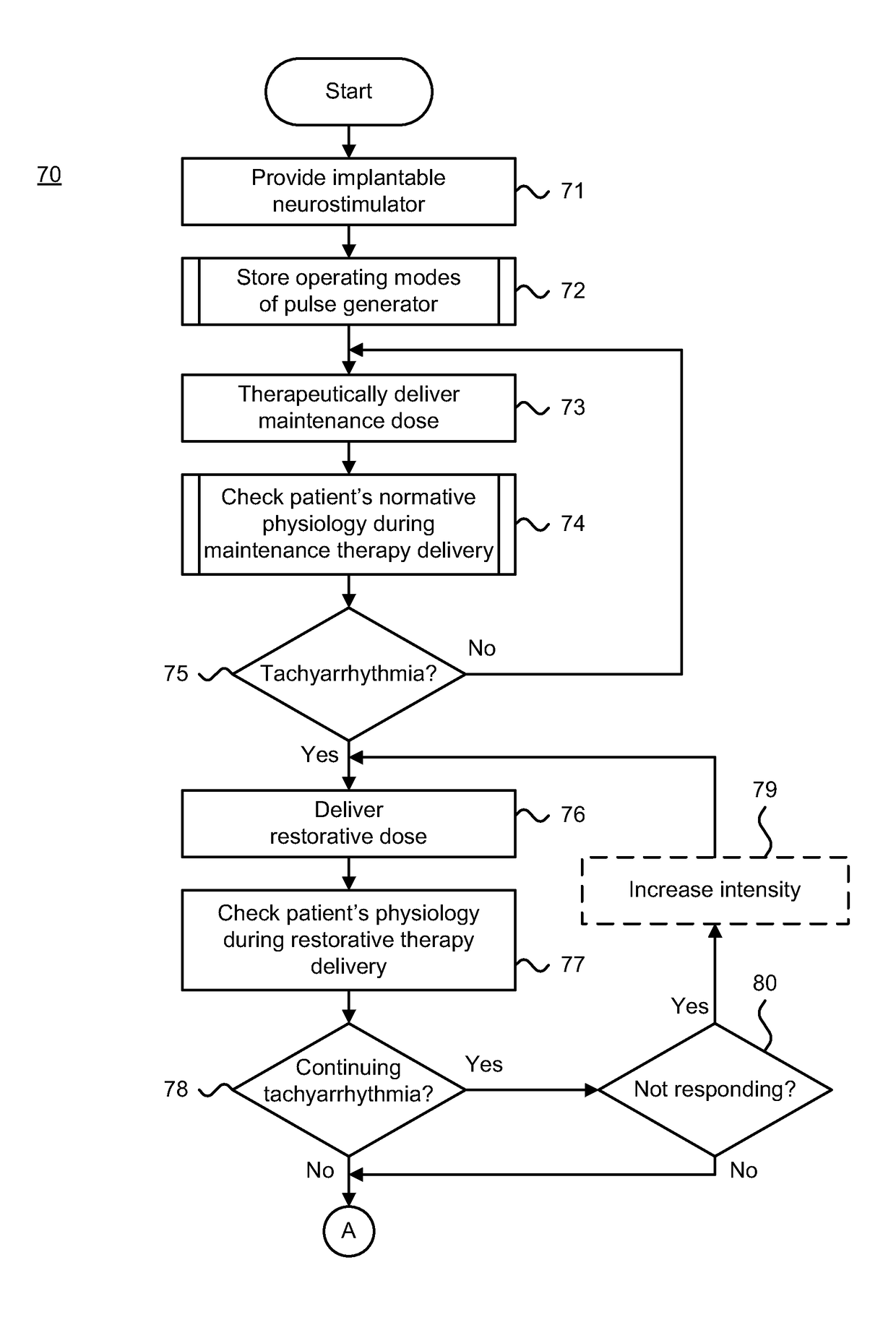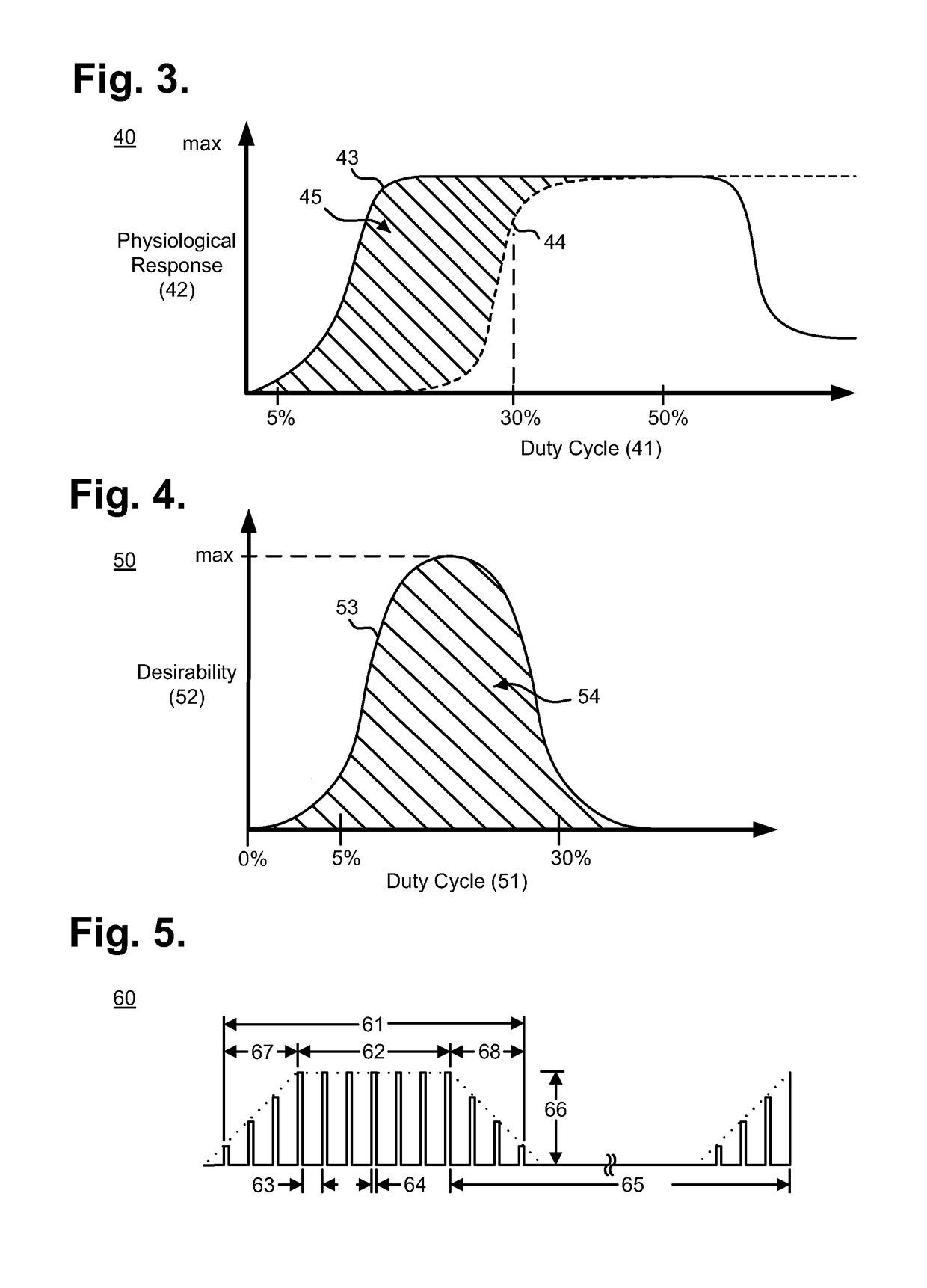Implantable neurostimulator-implemented method for managing tachyarrhythmia through vagus nerve stimulation
a vagus nerve and neurostimulator technology, applied in the field of implantable neurostimulator-implemented method for managing tachyarrhythmia through vagus nerve stimulation, can solve the problems of increasing the risk of tachyarrhythmia, reducing the effect of long-term cardiac performance, and restoring autonomic balan
- Summary
- Abstract
- Description
- Claims
- Application Information
AI Technical Summary
Benefits of technology
Problems solved by technology
Method used
Image
Examples
Embodiment Construction
[0031]Changes in autonomic control of the cardiovascular systems of patients suffering from CHF and other cardiovascular diseases push the autonomic nervous system out of balance and favor increased sympathetic and decreased parasympathetic central outflow. The imbalance is accompanied by pronounced elevation of basal heart rate arising from chronic sympathetic hyperactivation along the neurocardiac axis.
[0032]Peripheral neurostimulation therapies that target the imbalance of the autonomic nervous system have been shown to improve clinical outcomes in patients treated for three to twelve months. Specifically, bi-directional autonomic regulation therapy results in simultaneous creation and propagation of efferent and afferent action potentials within afferent and efferent nerve fibers comprising the vagus nerve. The therapy directly restores autonomic balance by engaging both medullary and cardiovascular reflex control components of the autonomic nervous system. Upon stimulation of t...
PUM
 Login to View More
Login to View More Abstract
Description
Claims
Application Information
 Login to View More
Login to View More - R&D
- Intellectual Property
- Life Sciences
- Materials
- Tech Scout
- Unparalleled Data Quality
- Higher Quality Content
- 60% Fewer Hallucinations
Browse by: Latest US Patents, China's latest patents, Technical Efficacy Thesaurus, Application Domain, Technology Topic, Popular Technical Reports.
© 2025 PatSnap. All rights reserved.Legal|Privacy policy|Modern Slavery Act Transparency Statement|Sitemap|About US| Contact US: help@patsnap.com



